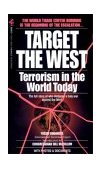|
| Home | About Kashmir Herald | |
Volume 4, No. 1 - July 2004 |
|
| Featured Article |
|
|
|
PGT-2003: A Tale Told by an Idiot Ajai Sahni The US State Department's Patterns of Global Terrorism 2003 (PGT 2003) Report has been pilloried by a number of American experts, who note that, "its maths defies reality". The Report contains a number of internal totalling errors that "even a third-grader could have found", according to one commentator in The Washington Times. The State Department has now taken cognisance of these errors and admitted that "the data in the report is incomplete and in some cases incorrect", and promised to issue a "revised analysis" after a review. But poor arithmetic and peripheral incompleteness is the least of the PGT 2003's problems. A review of the contents of the Report with regard to South Asia (the only region treated in this Assessment) exposes a capriciousness that does not suggest perverse intent, but utter incomprehension and abysmal ignorance on the part of those who have been charged with its compilation. The State Department indicates that the data was compiled by the Terrorist Threat Integration Centre (TTIC), which comprises "elements from the CIA, FBI and Departments of Homeland Security and Defence." If this reflects the levels of intelligence available to these agencies, or their competence, that should certainly disturb, not only the American taxpayer, but people across the world who have to deal with the often disastrous consequences of American errors of policy and perception. There is, through the Report, a comprehensive failure to identify and consistently apply clear definitions and norms, and a systemic tendency to both grossly underestimate and distort the actual patterns and magnitude of terrorism, globally. Speaking from Washington during a video conference with a group of Indians (including this writer) at New Delhi, on May 6, 2004, Ambassador Cofer Black, the US Coordinator for Counter-terrorism, under whose authority the Report is issued, stated: "My responsibility to the Secretary and others is to reflect the reality of events on the ground. These have to be validated and checked out, they have to be multiply sourced…" Little in the Report suggests that any such process of validation or diversity of sourcing has actually been followed. The Report speaks of a total of 190 incidents of terrorism globally, in which 307 persons were killed, in the year 2003, with 82 of these targeting the US. The US is, consequently, the country worst affected by terrorist acts in the year under review according to PGT 2003. If this were, indeed, the true magnitude of international terrorism today, we would be living in a blessed world. India alone experiences thousands of incidents of terrorism each year, which would meet US criteria of internationality and 'significance', but Appendix A of the Report determines that there were a total of just 49 such incidents in the country, with a total of 99 fatalities, all of them concentrated in the State of Jammu & Kashmir (J&K). The reality is that in J&K alone, there were at least 477 attacks on civilians in year 2003, with a total of 658 civilian deaths recorded by the South Asia Terrorism Portal (SATP) from open source reports (official statistics available with the Institute for Conflict Management suggest the total civilian fatalities were significantly higher, at 807; the divergence mainly results from subsequent deaths in hospital of civilians injured in incidents, deaths occurring in remote areas, and delayed reports of deaths, which are often under-reported in the media). Significantly, all terrorist groups operating in J&K are headquartered in Pakistan - including the supposedly 'indigenous' Hizb-ul-Mujahiddeen (HM); their cadres are armed, trained, and financed by Pakistani sources, both state and non-state; they cross over into India for brief 'tenures of service', and then cross back into Pakistan, and the most lethal of these groups, the Lashkar-e-Toiba (LeT) and the Jaish-e-Mohammad (JeM) have direct and multiple links with the international Islamist extremist movement, including the Al Qaeda, thus meeting any legitimate criteria on the 'internationality' of their activities. The official US position on these facts is, at best, evasive and facile. Confronted with the discrepancy in numbers, Cofer Black sought to represent the issue as a divergence in perceptions, stating, "In my dealings with the Indian Government I ask them and challenge them to do a better job of representing the issue as they see it," and again, "We look forward to the Indian Government effectively communicating the reality of the situation there…" This position appears to suggest that the PGT is compiled through some kind of adjudication process, with respective national Governments 'making a case' before the US State Department, and the latter then pronouncing on the merits of the evidence. This is certainly not the case, and is not borne out by the actual contents of PGT 2003, with most of the incidents mentioned in the 'Chronology of Significant Terrorist Incidents, 2003' (Appendix A of the Report) citing unidentified 'press reports'. Even on the basis of 'press reports', it is interesting to see how much PGT 2003 misses out - and the inconsistency of what it chooses to include. Several minor incidents of little significance are included. Thus, on April 10, PGT 2003, displaying extraordinary diligence, records: "In Kashmir, a bomb exploded in the famous Mughal Garden causing no damage, according to press reports. No one claimed responsibility." A number of attacks on the police and security forces are also included in the chronology - militating against the projected definition of terrorism as attacks against civilians or 'non-combatants'. If this was applied consistently, the total fatalities inflicted by terrorists in J&K would be even higher than those indicated above (a total of 380 SF personnel were killed in J&K, according to official sources; SATP records a total of 338 SF fatalities from open source reports). On the other hand, what is excluded is shocking. It is not possible, here, to give a full listing of the hundreds of incidents missed out (though such a listing can easily be made available separately), but it is useful to look at some of the more notable omissions: January 28: National Conference leader and prominent businessman Farooq Ahmed Kuchchay and his Personal Security Officer killed by a group of four suspected HM terrorists in Udhir village, Chatru area of Doda district. February 12: Three civilians are abducted and later killed by suspected Hizb-ul-Mujahideen terrorists at Dharam village, Gool area of Udhampur district. April 19: Unidentified terrorists abduct a civilian and later chop off his ears, nose and tongue at Chatroo village in the Doda district. May 9: Unidentified terrorists kill three prominent activists of the ruling People's Democratic Party (PDP) in the Chief Minister Mufti Mohammad Sayeed's hometown of Bijbehara, in south Kashmir. May 19: Four women and two children are beheaded by suspected JeM terrorists at village Chowkian in the Kot Dhara area of Rajouri district. May 26: A group of seven unidentified terrorists intrude into the house of a Village Defence Committee member and kill all five members of the family, including three children, and later set ablaze their house at village Seri Khwas in the Koteranka area of Rajouri district. June 13: Three civilians, including two women, are shot dead by unidentified terrorists in the Handwara area of Kupwara district. July 7: Three unidentified terrorists shoot dead five civilians, including two women, and injure another woman at village Dandhok, near the Line of Control (LoC) in Nowshera sector of Rajouri district. September 21: Three persons are killed and 29 others injured in a blast triggered by an Improvised Explosive Device (IED) fitted Video Cassette Recorder in the Rajouri town. September 27: Unidentified terrorists kill four members of a family, including a two-year old child, in the Mahore area of Udhampur district. October 17: Security forces foil the first Fidayeen (suicide squad) attack on the official residence of Chief Minister Mufti Mohammad Sayeed on Maulana Azad Road in capital Srinagar. Two Border Security Force (BSF) personnel are killed and 10 persons, including three photojournalists, sustain injuries. Interestingly, on September 9, PGT 2003 records: "In Sopat, Kashmir, armed terrorists shot and killed a former state forest minister, according to press reports. No one claimed responsibility." As a matter of fact, the attack on former Forest Minister, Peerzada Ghulam Ahmad Shah, at a marriage ceremony in Sopat village near Qazigund, was unsuccessful. Shah escaped with minor injuries, though his personal security officer was killed. So much for 'validation and multiplicity of sources'. Incidentally, no group has been identified as responsible for any of the incidents in Kashmir listed in the PGT 2003 chronology. It is not clear, under the circumstances, how a determination was made regarding the 'international' character of the incidents. By contrast, 'probable' responsibility is attributed for most incidents in, for instance, Afghanistan. The PGT 2003 chronology of significant incidents does not identify any acts of international terrorism anywhere in India outside J&K in the year under review. Interestingly, the South Asia Overview does make a general reference to such incidents, and carries two photographs, recording the worst acts of terrorism in India in 2003, the twin Mumbai Blasts on August 25, in which 97 persons (45+52) were killed according to the Report. The perpetrators of the Mumbai twin blasts had significant external linkages. Interestingly, after being 'validated, checked out, and multiply sourced', the Report gets the location of one of the explosions wrong: one incident occurred at the Zaveri Bazaar, and not at the 'Zahir Bazzar' as PGT 2003 notes. Worse, the combined fatalities in the two incidents, according to reports available in India, did not exceed 52. The hundreds of other incidents and fatalities in other parts of the country, including areas affected by Left Wing extremist groups such as the Maoist Communist Centre (MCC) and the People's War Group (PWG) - which have been included in the PGT 2003's listing of 'Other Terrorist Groups' - find no mention in the Report. Nor does India's terrorism-wracked Northeast figure in PGT 2003, despite the fact that virtually every group operating in the region is headquartered, or has bases in Bangladesh, with some camps located in Myanmar as well, and despite the overwhelming evidence that their leadership is being directly supported by Bangladesh's covert agencies. But Cofer Black simply dismisses all this on the grounds that, "We're not on the same sheet of music with the Indians on this"; and that "We do no have sufficient amount of information in terms of quantity and quality… that would allow us to recommend that they (the terrorist groups in the Northeast) be listed." Bangladesh, incidentally, widely acknowledged as an emerging centre of Islamist terrorist consolidation, a major supply route and transit point for illicit weapons smuggling, and a major sponsor of terrorist groups operating against India, finds no mention whatsoever in PGT 2003. Pakistan, if we go by the Report, is among America's "most important partners in the global coalition against terrorism", and has done exemplary work to arrest and neutralize terrorists, freeze their assets, pass anti-terrorism legislation and establish an efficient network of special courts to try terrorists. There is not a single negative reference to trends in terrorism in Pakistan, nor any suggestion that the country was responsible for, or has been one of the most significant locations and sources of, international Islamist fundamentalist terrorism. In fact, an interesting semantic shift in the report on India underscores the obvious intent and refusal to acknowledge ground realities in Pakistan: PGT 2002 explicitly identified Pakistan based terrorist groups operating in J&K. PGT 2003, instead, speaks vaguely of 'foreign based' terrorist groups operating in J&K, though Appendix B profiling "Designated Foreign Terrorist Organisations" clearly locates every single listed group which is generally known to be operating in J&K as being located in Pakistan. Another interesting omission here is that the Location/Area of Operation of major Pakistan backed terrorist groups such as the Jaish-e-Mohammad (JeM) and the Lashkar-e-Toiba (LeT) is identified as Pakistan in these profiles - no reference is made in the report to their activities in J&K. PGT 2002, by contrast, clearly indicated that members of the JeM "conduct terrorist activities primarily in Kashmir." There is a clear pattern that suggests a systematic effort to deny Pakistani culpability on international terrorism. It is interesting to note that all this occurs in a review of the year in which US Ambassador to Pakistan, Nancy Powell, had called on President Pervez Musharraf to end the "use of Pakistan as a platform for terrorism"; a senior State Department official, Richard Haas, confessed that Washington had been unable to persuade Pakistan to "stop cross-border terrorism" against India; and Michael Evanoff, a US Embassy official in Islamabad, termed Pakistan as "the epicenter of terrorism". The chronology of terrorism within Pakistan is also laughable. If PGT 2003 is to be believed, a total of just four "significant terrorist incidents" occurred in Pakistan in 2003. They included the January 5 incident in Peshawar, where "armed terrorists fired on the residence of an Afghan diplomat, injuring a guard", and the January 12 incident in Hyderabad, where "authorities safely defused a bomb placed in a toilet of a Kentucky Fried Chicken restaurant". There was only one incident, on April 13, in which (two) fatalities occurred. This would make Pakistan possibly one of the safest countries in the world, and certainly the safest in the region. That this is as far from the truth as is possible should, by now, be common knowledge, even in distant America. Once again, it is not possible to list the entirety of incidents in Pakistan omitted by the PGT 2003 chronology, but if one simply totals incidents on the SATP database in which multiple fatalities occurred or important targets were attacked (parameters far more stringent than those purportedly applied in the Report), at least 37 can be identified, with 142 fatalities. Among some of the important incidents PGT 2003 missed out in Pakistan: January 23: Anti-Taliban Afghan writer, Fazal Wahab, living as a refugee in Swat, North West Frontier Province, shot dead along with two other persons. February 22: Nine persons are shot dead and seven more wounded in an attack by unidentified armed men outside a mosque in Rafah- i-Aam Society, Karachi. February 28: Two policemen guarding the United States (US) Consulate in Karachi, Sindh, are killed and five others injured by an unidentified gunman. May 10: Approximately 11 persons are injured when an explosive device went off inside a Kandiaro-bound passenger bus at Pathan Colony, Hyderabad. May 13: A powerful bomb explosion occurs outside the Christian Memorial School in the Bannu district on May 13. However, no causalities were reported. July 4: At least 53 persons are killed and 57 others injured as three armed terrorists, including a suspected suicide bomber, attack a Shiite Muslim mosque in Quetta, capital of the Southwestern Baluchistan province, during the Friday prayers. July 28: Three persons, including a woman, are killed and four others sustain injuries during a bomb explosion in the Saidgai village of North Waziristan Agency along the Pakistan-Afghanistan border. September 27: At least 12 persons are injured when a bomb of low intensity exploded in a minibus under the Brigade police station-limits on the MA Jinnah Road in Karachi. November 20: Chief of Jamaat-e-Islami in Dera Bugti, Amanullah Bugti, and his two associates are killed near Dera Bugti, approximately 340 kilometers from Quetta. December 14: President Pervez Musharraf escapes an assassination attempt when an explosive device went off at the Chaklala Bridge near Jhanda Chichi in Rawalpindi approximately two minutes after the departure of his convoy. December 25: At least 18 persons are killed and 40 others sustain injuries during a second assassination attempt in less than two weeks on President Pervez Musharraf in the Jhanda Chichi area of Rawalpindi. [The assassination attempts on General Musharraf do, however, find passing mention in the South Asia Overview] It is useful to note that a majority of these incidents were executed by groups directly connected to, or supported by, Osama bin Laden's International Islamic Front (IIF). As regards the other countries of the region, the Report fails to go beyond bland generalisations, and cannot provide anything that would meet the criteria of an objective and realistic assessment. Given the complete lack of realism or reliability of the PGT 2003 Report in its assessment of the situation in South Asia, it is difficult to believe that it is any more accurate with regard to other parts of the world. The report can only further and severely undermine confidence in US perceptions and projections with regard to terrorism, and in the credibility of its intelligence. This is a rather unsettling prospect: to discover that the world's sole hyperpower operates on such poor intelligence is not particularly comforting to the rest of the world, or, indeed, to the people of the US who are yet to come to terms with the intelligence failures that preceded 9/11, and the manipulation of intelligence that preceded the ruinous misadventure in Iraq. Courtesy: South Asia Terrorism Portal |
 |
 |
 |
|
|
Archives
| Privacy Policy |
Copyrights
|
Contact
Us | |
||